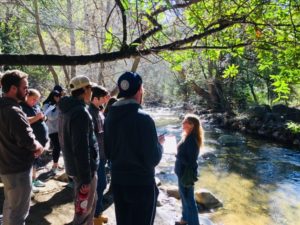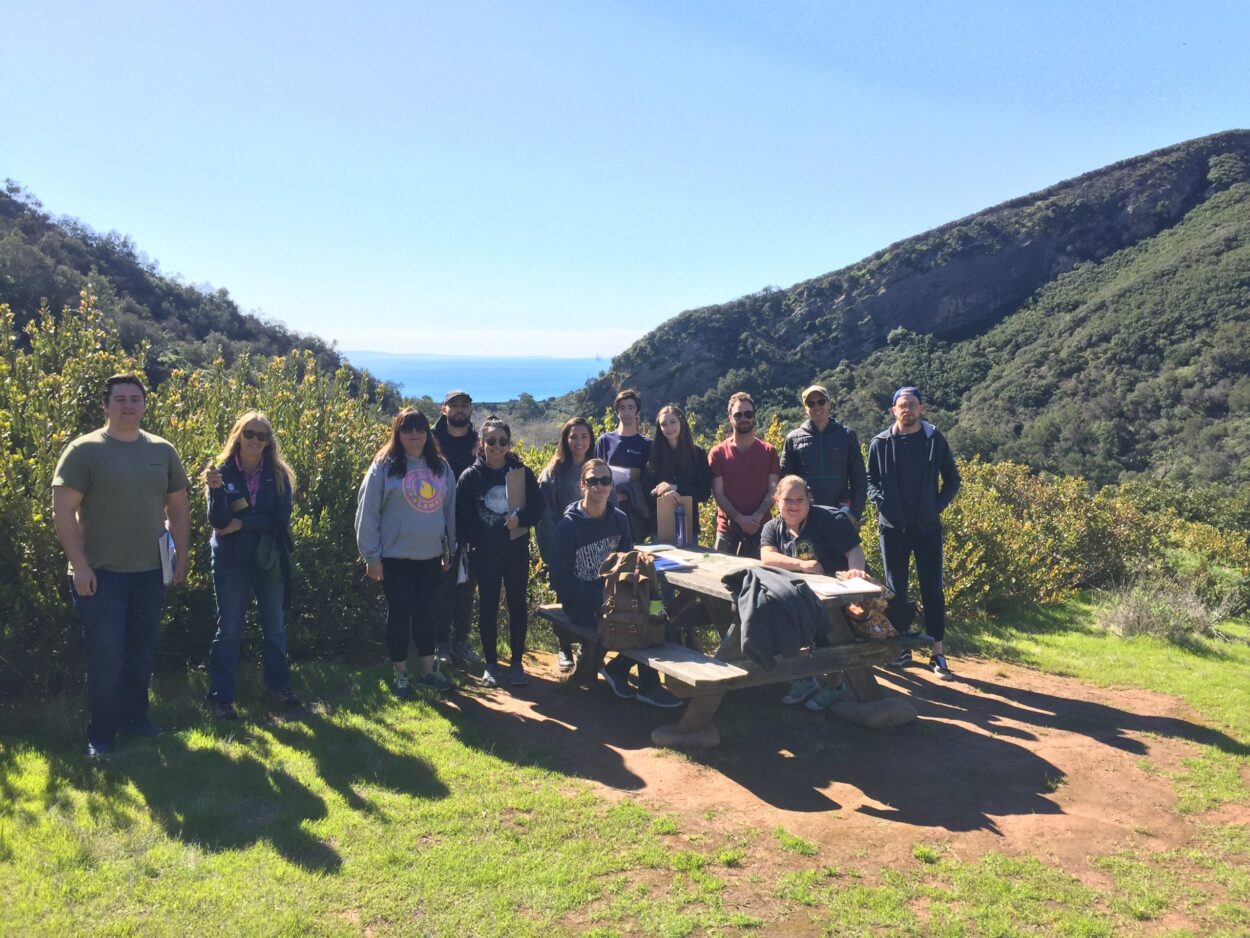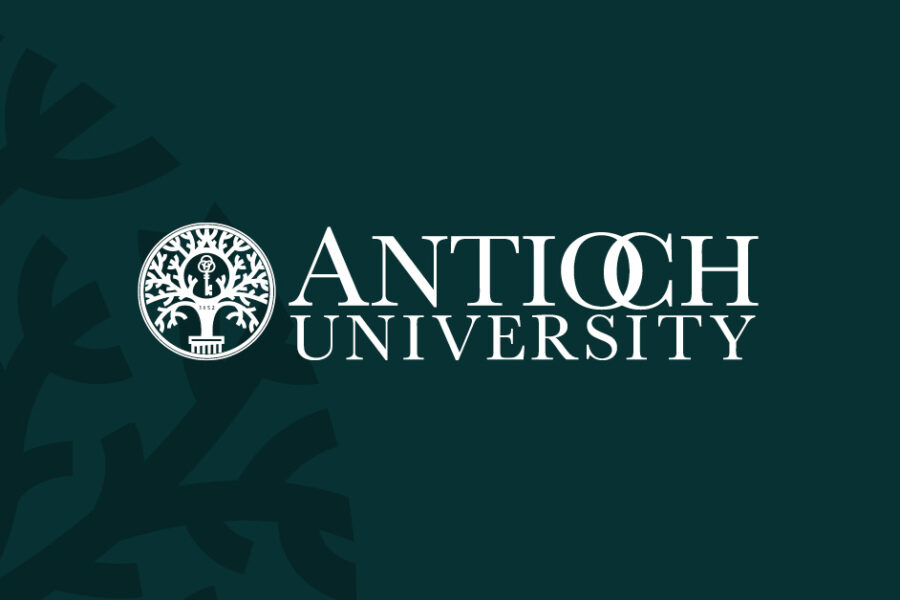Dr. Dawn Murray, Chair of the Undergraduate Studies Program, teaches a science course each quarter. Each one includes a major component of experiential learning.
 Natural History of Santa Barbara is taught each winter and includes eight field trips to natural locations around Santa Barbara, including the Santa Barbara Botanical Gardens and the Carpinteria Salt Marsh. This past quarter they visited the Carpinteria Seal Bluffs and got to see seals giving birth on the beach. They saw the role volunteers play in keeping visitors quiet and at a distance from the birthing seals. At the salt marsh, they watched a dump truck drop a load of mud onto the beach. In talking with the workers, they discovered that the mud had been dredged from debris flow basins to prevent flooding of people’s homes during upcoming storms.
Natural History of Santa Barbara is taught each winter and includes eight field trips to natural locations around Santa Barbara, including the Santa Barbara Botanical Gardens and the Carpinteria Salt Marsh. This past quarter they visited the Carpinteria Seal Bluffs and got to see seals giving birth on the beach. They saw the role volunteers play in keeping visitors quiet and at a distance from the birthing seals. At the salt marsh, they watched a dump truck drop a load of mud onto the beach. In talking with the workers, they discovered that the mud had been dredged from debris flow basins to prevent flooding of people’s homes during upcoming storms.
“The ‘Redwood Section’ was my favorite, with some of the oldest trees dating all the way back to the ’20s!” said undergraduate student Rene Montesino of the field trip to the botanical gardens. “The biggest takeaway of the day for me was the age of the redwoods. They can easily be 2,500 + years old!! That absolutely blew my mind. The fact that they stand so tall despite the endless challenges they have had to endure over thousands of years is simply astonishing.”
 “Dawn led us on an informative, fast-paced tour of the SB Botanical Garden,” said undergraduate student Joseph Fuqua of that same trip, “and her humor-filled impromptu discussions with the class somehow led to a very cool spontaneous demonstration of a tea ceremony at the incredible Shinkansen Japanese Teahouse!”
“Dawn led us on an informative, fast-paced tour of the SB Botanical Garden,” said undergraduate student Joseph Fuqua of that same trip, “and her humor-filled impromptu discussions with the class somehow led to a very cool spontaneous demonstration of a tea ceremony at the incredible Shinkansen Japanese Teahouse!”
The purpose of the class is to learn about local natural history— the plants, animals, and ecology of the students’ home landscape. It’s an upper-division science course but delivered from a liberal studies perspective. “A lot of people are afraid of science,” Murray said. “They’re intimidated by data-heavy classes like chemistry or physics.” Conversely, Murray’s science courses introduce the practical applications of science and natural studies and seek to contextualize scientific concepts that are often pretty abstract.
What is actually happening out there? Let’s go explore, talk to people in the field and see the plants and animals! This is the modus operandi for each class and study abroad Murray teaches— not just Natural History.
 Spring quarter, Murray teaches Marine Ecology. They see whales, sharks, and Octopi, and study ocean currents and tides – experiential learning emphasizing the connectedness of the health of our oceans to our own existence. “Everyone needs to learn about marine ecology, she said. “The oceans are the heart of the planet, cover two-thirds of the planet, and the oceans provide 70% of the oxygen on the planet. So yes, everyone needs to learn about and appreciate marine ecology.”
Spring quarter, Murray teaches Marine Ecology. They see whales, sharks, and Octopi, and study ocean currents and tides – experiential learning emphasizing the connectedness of the health of our oceans to our own existence. “Everyone needs to learn about marine ecology, she said. “The oceans are the heart of the planet, cover two-thirds of the planet, and the oceans provide 70% of the oxygen on the planet. So yes, everyone needs to learn about and appreciate marine ecology.”
Global Environmental Studies is offered in the Fall (sometimes online). Additionally, there is often a weeklong credit-bearing study abroad trip. This past fall Murray led a trip to the Galapagos Islands. In 2019, join her for a study abroad in Bhutan.
What do students take away with them from Murray’s courses? Getting to know and more deeply understand the natural world around them often inspires them to be more conservation-minded (recycle, reduce, reuse) and to continue exploring natural landscapes. Some incorporate what they’ve learned into careers and further studies after they graduate. One of her former students, Tamlorn Chase, made a film about the Gaviota Coast, one of the last remaining undeveloped pieces of land on the Southern California coast. Recent graduate Atria Peter works on a whale-watching boat, is pursuing her captain’s license, and is planning a career as an ocean conservation educator.

“At the end of the quarter students come away with a new love and appreciation for the natural world all around them,” said Murray, “The opportunity to go to places they’ve never seen before inspires them to keep on exploring when the class is over!”
And then there’s the fact that taking a class with Dawn is just plain fun… and always extremely educational!
“Dawn is easily one of the best teachers that I have ever had in my life. Her devotion to education and environmentalism coupled with her engaging personality and altruistic virtues put her in a league all on her own,” said Montesino. “We hit it off as soon as we met (weeks before taking her class) and my respect and admiration for her only grows. Dawn’s determination to educate and inspire is unremitting and contagious!”
The nature-based perspective on science that students experience in these adventurous courses could be described in much the way nature can be described… AWESOME. Take a science class with Dawn Murray. It may just open up a whole new world.



